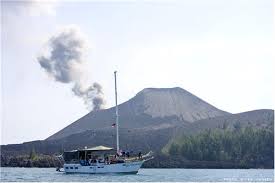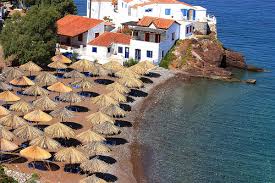Batik As Indonesian Cultural Heritage
The word "batik" is Indonesian in origin, even if the concept was known by Egyptians and Indians. It is known to be more than a millenium old, and there are evidences that cloth decorated through some form of resist technique was in use in the early centuries AD in several West African, Middle-Eastern and Asian communities.
The word Batik is originally an Indonesian-Malay word and derives propbably from 'titik' which means to dot .This art of textile is well spread in the hindu and malay world, but Indonesia is certainly the heart of the Batik.This way of painting and coloring on textile cloth has reached its higher degree of excellence in the Island of Java , in cities like Solo, Yogyakarta, Pekalongan or Cirebon. From Java this 'batik' cloth was exported to other islands of the archipelago and to the Malay peninsula.
The United Nations Educational, Scientific and Cultural Organization has officially recognized batik as an Indonesian cultural treasure. Unesco, would make public its decision to recognize batik as a unique hallmark of the country’s heritage during a meeting of the Intergovernmental Committee of Intangible Heritage, held from Sept. 28 to Oct. 2 in Abu Dhabi, United Arab Emirates.
The government has conducted field research since 2008 involving batik-producing communities and experts in 19 provinces across the country in preparation for the nomination of batik as a cultural artifact. “Batik is not only considered part of Indonesia’s cultural heritage, but is also now recognized as a representation of humanity’s culture,” adding that as a traditional cloth, batik was rich in value as well as cultural inheritance.
Meanwhile, Culture and Tourism Minister Jero Wacik said that in 2003, Unesco recognized wayang kulit , or shadow puppets, and a traditional dagger as aspects of the country’s cultural heritage, adding that it would continue to seek Unesco recognition of its cultural artifacts. Batik techniques: painting on cloth.
The art of "batiking" is similar to the one of drawing or painting on a piece of cloth. The main tool, thecanting ('tjanting'), is used in stead of a pencil or a brush, andliquid wax(see paragraph here below)in stead of paint. Finely detailed designs are first drawn freehand with a pencil on the textile. Then hot liquid wax is applied. Here above, a Javanese woman applying wax in the intricately involved patterns with a canting (tjanting), a small copper container with a long slender spout.
From time to time she blows on the tip of the canting to secure an easy flow of the wax. Areas not slated for coloring are filed with the wax. The cloth is then passed through a vat of dye. The wax is removed with hot water, scraped from the portions of the dried material still to be dyed. The parts that were covered by the wax did not absorb the dye and thus remain white (or whatever color the original cloth was previously dyied). Since the wax behave as a resisting medium, this process is called resist-dye process.
Next, other areas are waxed over. this is repeated during each phase of the coloring process, up to four or more times, until the overall pattern and effect are achieved.
THE WAX
A traditional recipe for batik wax is a mix of beeswax and paraffin, about 60%/40%. Beeswax is soft, pliable, and blocks completely: no cracking. Paraffin is more brittle, and lets dye penetrate wherever cracks form. Crackle is a characteristic batik effect, a scatter of thin dark wavy lines, a batik hallmark. Some dyers seek crackle, freezing and crumpling the cloth to make more. Others avoid, if they can, any effect that seems uncontrolled. For more crackle, more paraffin.
Any clean, low-oil paraffin, melting from 130 - 150° F will work. Beeswax should be light yellow or tan and clear of debris. But most batik today is done with synthetic micro-crystalline waxes. They’re more consistent, more often reusable, penetrate better, can be heated (safely) to higher temperatures. They usually fall between beeswax and paraffin in price and in working properties. They can be blended with other waxes for intermediate effects.
Published By :






















